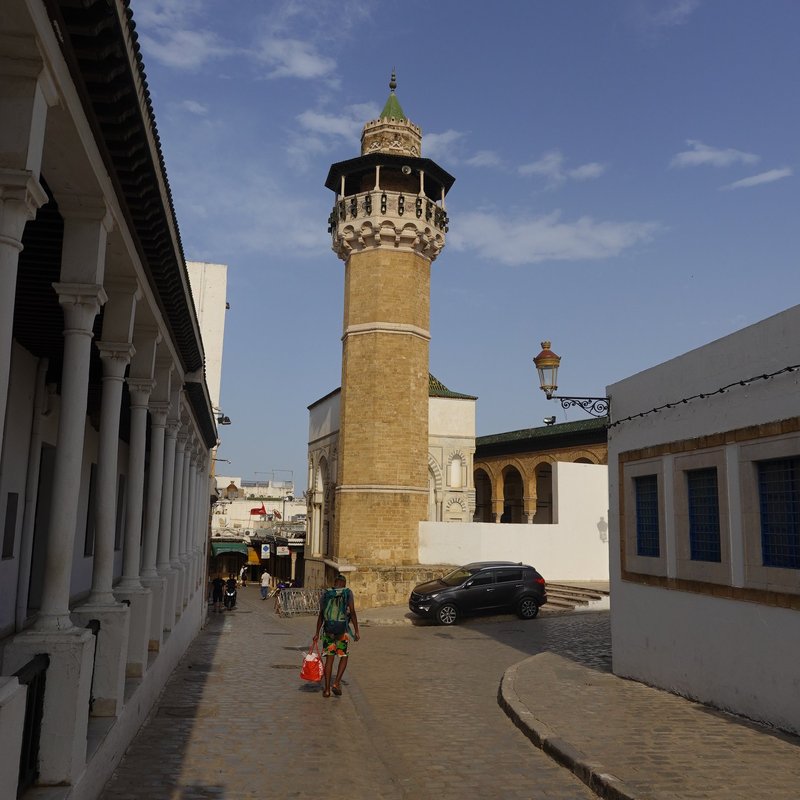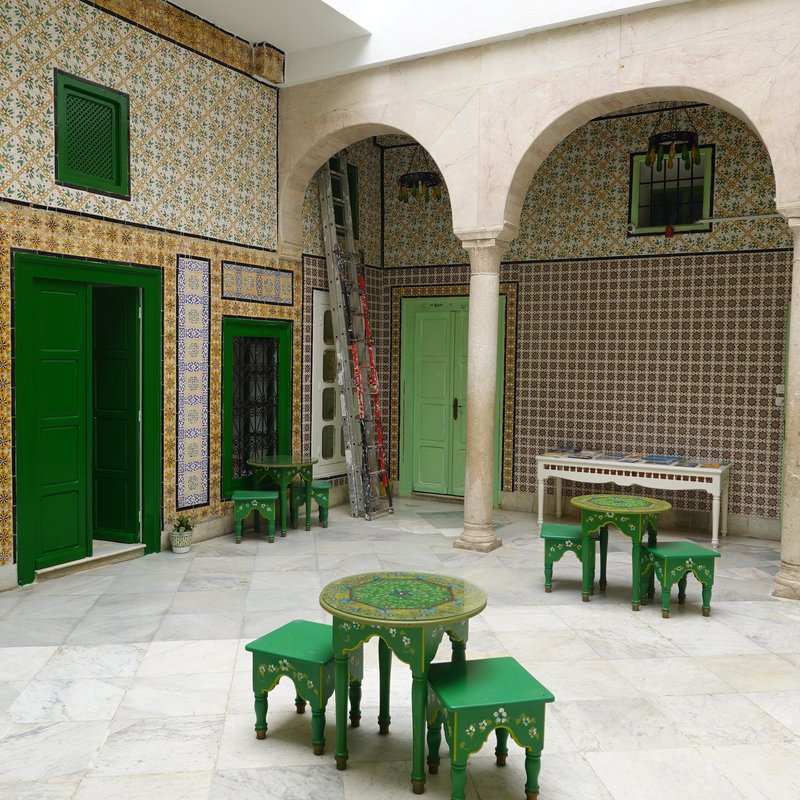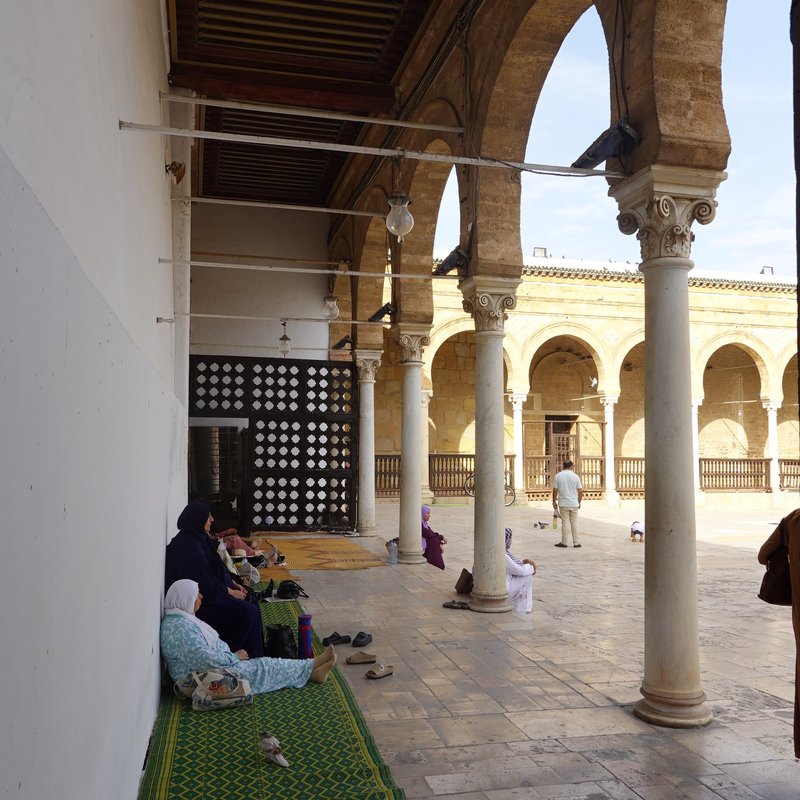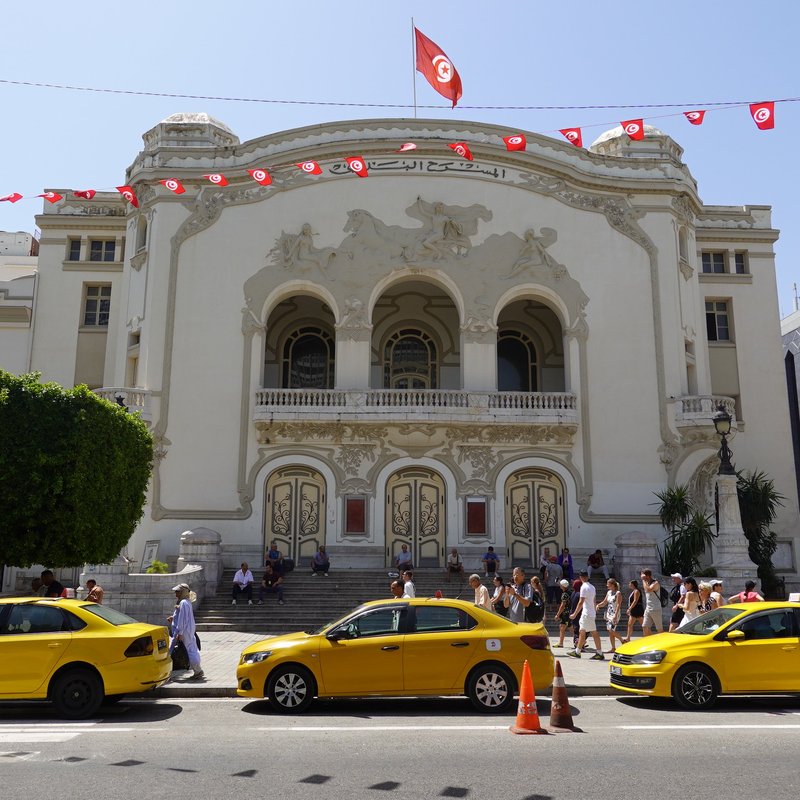After picking up my better half from Tunis airport, who I had missed so much during the first part of my trip to Tunisia, we went as a happy couple to the medina to spend a night at the Dar Ya hotel.
Having abandoned Wilson the mobile home in the guarded Mohammed V parking lot along the eponymous boulevard, we walked up the prestigious Habib Bourguiba Boulevard and then Avenue de France to the Bab el-Bahr gate, the main entrance to the medina from the French colonial city. Note that unlike Sousse and Kerouan, the walls of the medieval city (7th-16th century) were demolished at the end of the 19th century under the French protectorate.
How can you express your feelings once you've entered Jeema ez-Zitouna Street? The contrast between the colonial city and the medina is as strong as the Harissa of Cap Bon. The street is narrow and cluttered with all sorts of things, especially touristy ones, but it's worth pushing your way to the Great Mosque, then the western, northern, and southern parts of the city, which are more confidential and residential.

We stayed two days in the medina and you have to devote that much time to visiting it, because, yes, the medina has more than 700 remarkable monuments, most of them Islamic, in an extremely limited space, but they still have to be open to the public! And so for some of them we had to try twice, with no guarantee of success!
Luckily we were staying in a typical Tunisian house called "Dar". We only see the entrance doors, sometimes studded, very beautiful. These houses are introverted like Roman houses around a central patio with parts accessible to guests and others private. We would have liked to visit at least one, the Dar Lasram (19th century PC), but it was closed. Just like the Tourbet el-Bey mausoleum (17th-19th century PC), just like the madrasas (Koranic schools) and the mosques because they are forbidden to non-Muslims. And what's more, in the street, we don't have enough space to admire the visible parts of all these magnificent buildings because the streets are narrow.

What remains is the maze of streets, the souks and working-class neighborhoods, and the general atmosphere. They say you have to get lost there. This is somewhat true, and their random visit more than compensates for the frustration of not being able to enter official buildings normally open to the public. In the souks, we spoke with a maker of Chechias, these colorful felt hats, and admired a coppersmith at work. The vendors are very pleasant and never insist on selling their products. Note that the work of the coppersmith is listed as intangible cultural heritage.
I would like to take this opportunity to recommend purchasing a very well-written architectural guide from DOM Publisher: Tunis. It has been published in French and English. The authors are heritage specialists. This guide not only covers the most exemplary buildings in the medina of Tunis, but also covers colonial and post-colonial Tunis, Carthage, Zaghouan and El-Djem. Each building analyzed is illustrated with a photo and a plan, and their location is shown at the end of the volume on a very well-made map.
In the meantime, we arrived almost without knowing it in front of the Great Mosque, Jemaa ez-Zitouna where, my wife having asked for a veil to lend in the shop opposite (SIC!), it is possible to slip discreetly into the central courtyard. Even if you cannot visit it, it does not matter because if you go to Kerouan, you can visit the Great Mosque (670 PC) which served as a model for this one (698 PC).

Just like my travel writer predecessors, don't hesitate to spend time visiting the colonial city: it is surprising and exceptional to see in Africa art nouveau (Municipal Theatre), art deco (La Nationale Building), modernist (Ministry of Culture and Tourism) and even brutalist buildings! (Hôtel du Lac) often in a... let's say... romantic state, as in Saint-Louis, Senegal, for example, so I don't understand why the Tunisian authorities don't include it on the tentative list? It really deserves urgent protection.

For those who have visited the Kerouan Archaeological Museum, a visit to the Bardo Museum is not essential; the section devoted to Islamic art, which could be a good complement to a visit to the medina, is not very extensive.
More on
Comments
No comments yet.
